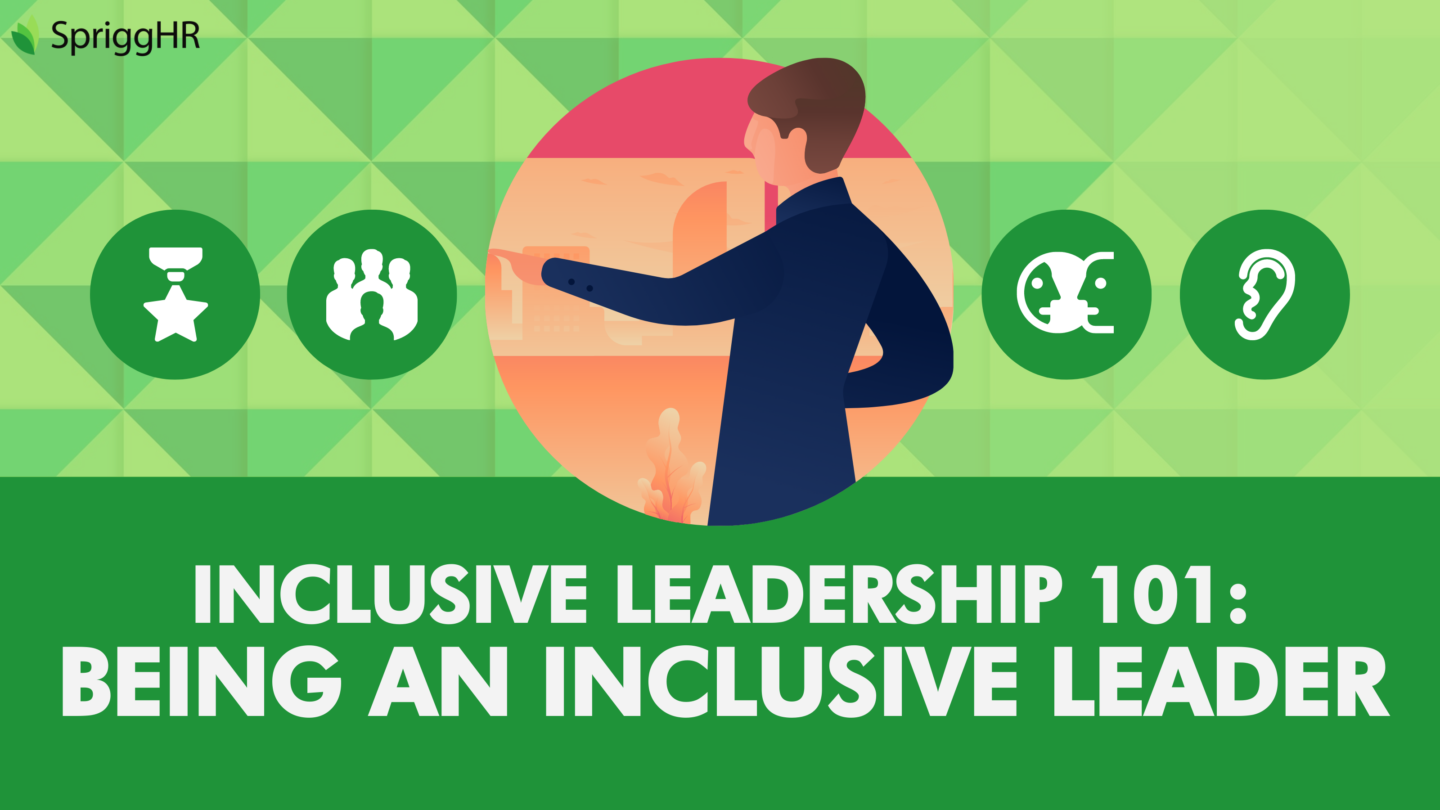
Inclusive Leadership 101: How to Be an Inclusive Leader
Being an inclusive leader is the key to optimizing diversity in the workplace, leveraging the power of inclusion to the company’s advantage, and yielding the required results are only possible when inclusivity takes priority.
What is Inclusive Leadership?
Inclusive leadership has rapidly become a popular topic in the last few years, largely due to the increased push on equitable access to equal opportunities in the workplace.
But what is it, exactly? Inclusive leadership exists when a leader shows optimism, promotes collaboration, and is viewed as progressive in their leadership style. Their principle goal is to identify the methods and outcomes that benefit as many people as possible, and since they aim to accommodate all players and not just themselves when making decisions, their decision-making process can be sometimes slower and / or cumbersome.
Inclusive leaders are people-oriented, typically excellent listeners, and can tap into the talents and motivations of their team members. They are patient, understanding and genuinely interested in others. Oftentimes, inclusive leaders prefer the status-quo, they can have difficulty initiating or embracing change, preferring incremental changes that minimize tension and uncertainty. However, at its core, inclusive leadership wants the group to succeed, not just the leader themselves, making it one of the most important facets of leadership.
Inclusive Leadership as a Beneficial Goal
In today’s day and age, progressive leadership demands that organizations move beyond token diversity alone to harnessing the potential that comes from inclusivity. While diversity is the equation, inclusion is the product, making the concept work by leveraging the wealth of knowledge, perspectives, and insights that exist in open, trusting, and diverse workplaces.
Inclusive leadership can allow organizations to achieve a highly competitive advantage, changing demographics across the workplace and in the market as a whole. Any organization that has a reputation of strong inclusivity becomes a highly sought-after company to work for, attracting top diverse talent and committed customers and clients alike. In turn, a highly diverse talent pool sparks greater creativity, propelling innovation for a company that can drive them to achieve great success.
How to Be an Inclusive Leader: The 3 Best Practices
Demonstrating inclusivity as a leader can be challenging for some. Even the leaders who fully embrace the business case for diversity, and who recognize the risk of group think in homogenous workforces, can sometimes feel unprepared to be inclusive. Although they aim for inclusive leadership, they don’t understand what to do, or how to modify their current approaches. This is where the importance of inclusive practices comes in. Possessing a thorough understanding of some of the best practices of inclusive leadership can help leaders overcome those hesitations and harness the power of inclusive leadership.
1. Show Appreciation
When your company experiences success, it is critical to acknowledge that you alone are not responsible. As a leader, you should recognize that great ideas and those who work hard, are a result of a team of talent. Inclusive leaders understand the importance of recognizing the contributions of others.
The team members are the driving forces that keep the teamwork moving along. Inclusive leadership is centred around caring more for the team succeeding together, than fulfilling the leader’s targets. Truly inclusive leaders acknowledge all ideas, even those poorly-conceived ones, in an effort to encourage better ones that will work for the company. Instead of saying “okay, but”, they aim to say “yes, and”, a style of leadership that stimulates better collaboration from their teams over time.
2. Demonstrate Emotion
While the direction of what you present to your team is crucial, so too is the way in which you communicate that to them. A leader’s emotions and gestures are just as scrutinized for meaning as their words are. If you display negative emotions, this can cause additional stress among colleagues and staff. As a leader, you are expected to hold a certain level of diplomacy, even when delivering bad news or speaking the hard truth. A leader can demand accountability or better results without resorting to belligerence.
People will always respond positively to an authentic expression of positive emotions. A leader who shows passion for the projects the company is undergoing, passion for the organization as a whole, and passion for the people involved can rally others in a way that lends itself to success. An inclusive leader that shows positive emotions such as excitement or enthusiasm for new projects, happiness over someone’s good work, or encouragement when obstacles arise, can be extremely motivating for a workforce.
3. Actually Listen
Effective communication is a two-way street, even for those in the highest of organization rankings. If you want to be listened to, you have to do your share of the listening, too. Gaining input from others, appreciating various perspectives and opinions, can improve your decision-making processes. It also allows for those that contributed to the process, even those that argued against, to be more engaged and likely to act on the supporting of those decisions.
That is not to say that everyone’s opinions should be put into practice, or that every single complaint needs to be satisfied immediately. Drawing on management judgement is still critical, but recognizing that some people will have better ideas, more experience, or more creativity, is important to inclusive leadership. Everyone should have an opportunity to be heard, and respected, and inclusive leaders aim to facilitate discussions that include everyone and focus on the issue at hand. They are more likely to obtain information they didn’t know or consider viewpoints that make them broaden their own views. When a leader is open and receptive to all perspectives, it encourages much more creative and responsive solutions, driving the organization forward at a much faster rate.
Inclusive Leadership is a Competitive Advantage in Today’s Market
Inclusive leaders are more than promoters of a diverse workplace. They work to be inclusive in their own thoughts, perceptions, actions, and decisions, and inspire an inclusive mindset in others. They are self-aware advocates for diversity, that also possess the necessary skills to leverage the benefits of a diverse team, achieving better performance overall. Inclusive leadership promotes organizations in which teams are open and trusting, able to work inclusively, leveraging diversity for greater adaptability, and achieving competitive results.





